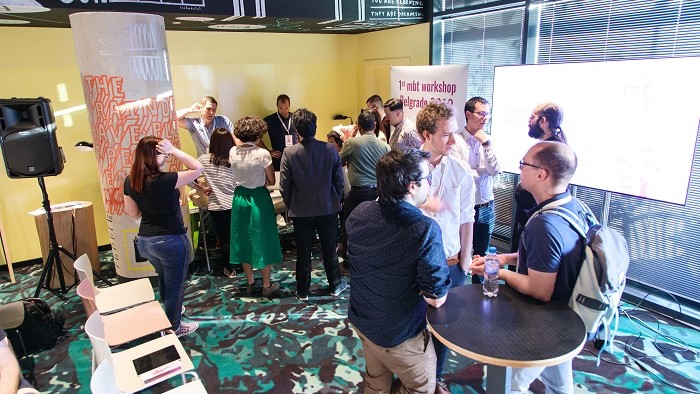Each person is different and so is its brain activity. Whatever we do, wherever we are, we are always influenced by the world around us. This in turn affects our mood, our experiences and finally our brain activity. In scientific settings, this can be problematic as many uncontrollable variables harden the interpretation of results and limit the transferability to real world settings. At TUM, however, research isn’t done for its own purpose but in the end should lead to technologies which impact our society and change it for the better. Thus, bridging the gap between science and society by moving technologies outside the lab into real world setting is a key challenge.
I am supporting CyberTUM project for quite a while now. Under the umbrella of CyberTUM student teams are preparing for the Cybathlon. The Cybathlon is a competition by ETH Zurich, in which state-of-the-art technical assistance systems are used to support people with physical disabilities completing everyday tasks. This competition makes this aspect very concrete, as a brain-computer-interface must work reliably in daily life to be useful. Only then, they will be accepted by (motor impaired) users and can finally be an improvement to their lives. In the CyberTUM team, we are actively working on this transition. Thus, my fellow student from the Elite Graduate Program "Neuroengineering" Mert and I joined the first mBrainTrain workshop on mobile EEG in Belgrade (Serbia) to get together with experts in the field.
Besides debating about scientific questions, we of course also enjoyed the culture and nightlife of Belgrade. The workshop took place in the middle of the historic city center with all its delicious restaurants and old buildings - to the Belgrade Fortress it was just a 5 min walk. The farewell party at the Beton Hala, an accumulation of modern bars and clubs directly at the promenade of the river Save, concluded the workshop and offered a nice opportunity to get in touch with all the other people on a less formal level.
After the two-day workshop, we are back in Munich with a lot of new insights about mobile EEG, an increased network of experts in the field and last but not least lasting impressions from a lovely city at the edge of Europe. Of course, we also will use the new knowledge in our CyberTUM team to improve the performance of the BCI system that we will then use in the final competition in May 2020 in Zurich.
Text: Florian Schönleitner, Elite Graduate Program "Neuroengineering"


